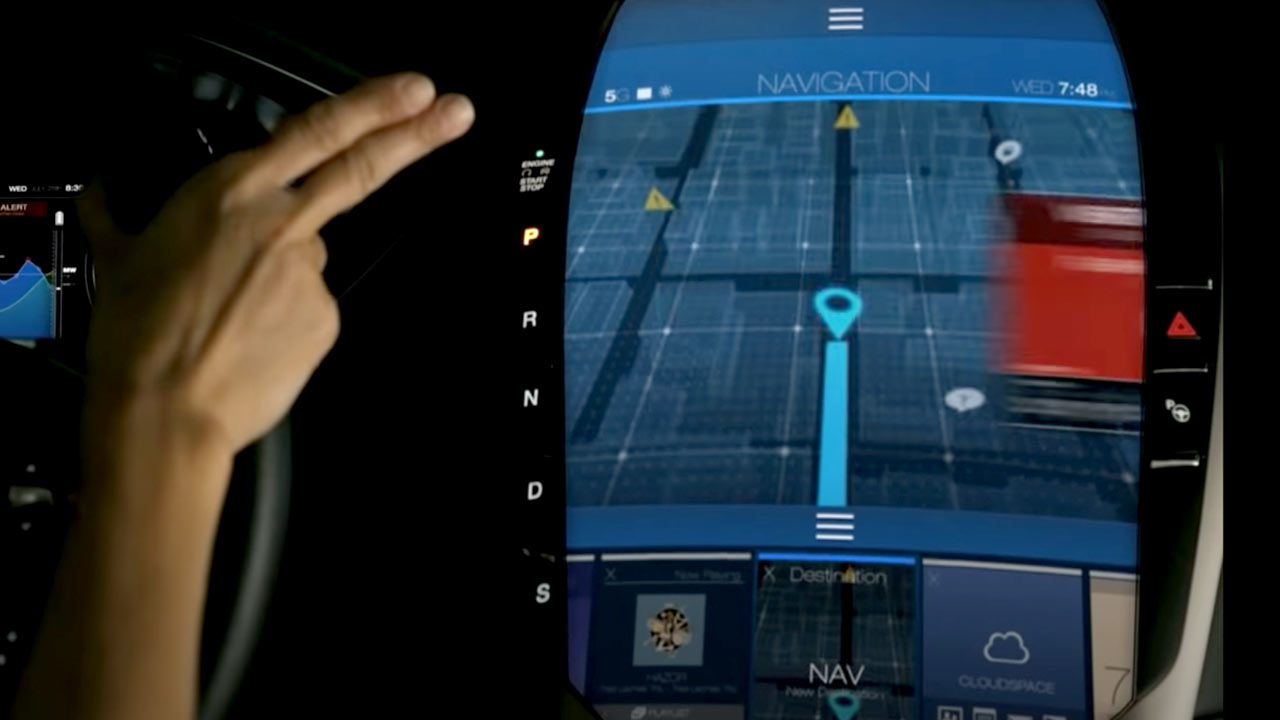SSZT137 august 2021 AWR6843AOP
- 1
-
2
- 3
- How Multifunction Sensors Enable Gesture Control and In-Cabin Sensing
- Multimodal Functionality All on One Chip
- Flexible In-Cabin Placement
- Sensing Unaffected by Lighting Conditions
- In-Cabin Sensors Do More with Less Cost and Design Time
- Rethinking In-cabin Sensing With Design Flexibility
- Resources to Get Started

With a swipe of the hand, gesture detection gives drivers a new way to control in-cabin climates, lighting, windows, infotainment systems and more. There are currently several options for adjusting various comfort and convenience functions in the cabin. However, manipulating the buttons, knobs and especially touchscreens requires drivers to divert their eyes.
Today, many automotive in-cabin sensor solutions are mostly based on front-end time-of-flight (ToF) or cameras, and these do not have the intelligence nor the ability to serve multiple applications. But imagine if the same devices used for gesture control could also detect the motion of a child left in a car, or alert car owners when intruders are attempting to break in, even when the car is powered off. Rather than having multiple sensors, a single multifunction sensor can be used in different modes to address these scenarios.
How Multifunction Sensors Enable Gesture Control and In-Cabin Sensing
With TI millimeter wave (mmWave) radar technology, systems have the ability to detect multiple gestures such as a swipe (left to right, right to left, up to down, down to up) without the use of contact buttons or knobs. TI’s AWR6843AOP (antenna-on-package) mmWave sensors enable high-accuracy gesture detection even through materials. Their small form factor enables placement in flexible positions in the vehicle, such as the overhead console or in the dashboard.
The sensors can operate in all lighting conditions and provide the system with data parameters such as range, angle and velocity in the cabin by leveraging 3D point-cloud information. TI mmWave sensors’ multimodal functionality enables their use in multiple applications all on one sensor, saving design time and costs.
This “Multiple gesture” demo demonstrates a 60-GHz AWR6843AOP single-chip sensor and its ability to detect and identify the gesture of a person from the front seat of the car. The demo uses 60-GHz AOP technology because this bandwidth is open worldwide for in-cabin radio-frequency (RF) sensing applications.
Gesture detection for automotive in-cabin applications video
The AWR6843AOP evaluation module (EVM) has an integrated AOP to help simplify the RF design process, as well as enable a 120-degree field of view in both azimuth and elevation (horizontal and vertical views). In the demo, the EVM is mounted in the front dashboard space of the vehicle and has a 4-m range of detection, as well as a 4-cm range resolution.
Some sample hand gestures include: swiping from left to right, right to left, and swiping from up to down – and vice versa. It is possible to program the sensor to identify various gestures based on their Doppler signatures, since the distance of the hand, the velocity of the motion and the angle of the gesture are all detectable parameters.
Multimodal Functionality All on One Chip
TI’s intelligent and integrated mmWave chip, can provide multiple functions, all on one device. For example, when the car is powered off, the sensor can be in a low-power state to detect the presence of a child or intruders. When the car is powered on, the sensor can then function for gesture detection. This functionality eliminates the need for multiple, separate sensors for various applications.
Flexible In-Cabin Placement
TI mmWave sensors enable more flexibility for in-cabin placement based on the wide field of view, coupled with mmWave’s ability to sense through materials. Depending on the application, you could integrate the sensor in the dashboard, in the overhead console, or even the second or third vehicle rows for more personalized applications such as lighting, entertainment screens or passenger adjustments to temperature or audio.
Sensing Unaffected by Lighting Conditions
Because TI sensors use mmWave radar, they are not affected by any sort of lighting in the cabin as they are based on motion. Other solutions are susceptible to false positives from sunlight, while camera-based solutions might not function at full capacity in the dark.
In-Cabin Sensors Do More with Less Cost and Design Time
TI mmWave sensors are an intelligent solution for gesture sensing in the cabin because you can use them for features such as lighting control, door open-to-close, media control, audio control and human machine interface (HMI) control. When used in HMI systems, TI’s AWR6843AOP enables high accuracy detection with multimodal functionality, enabling flexibility in placement and the sensing of multiple gestures.
Rethinking In-cabin Sensing With Design Flexibility
You can perform more in-cabin sensing with fewer devices because TI’s multifunction AWR6843AOP provides robust, multimodal sensing even in a range of light and temperature conditions. With a package size that’s 25% smaller than non-AOP devices, TI AOP technology enables design flexibility and convenient placement in space-constrained areas such as the overhead console or vehicle pillars. Objects blocking the sensor are no problem with high-performance radar that permeates materials to detect a child in the back seat or recognize gestures for controlling vehicle systems.
Resources to Get Started
- Visit the AWR6843AOP product folder for data sheet and watch the video demonstration.
- Read the reference design document for more information on gesture detection including processing chain.
- Review the AWR6843AOP EVM and test the reference software.